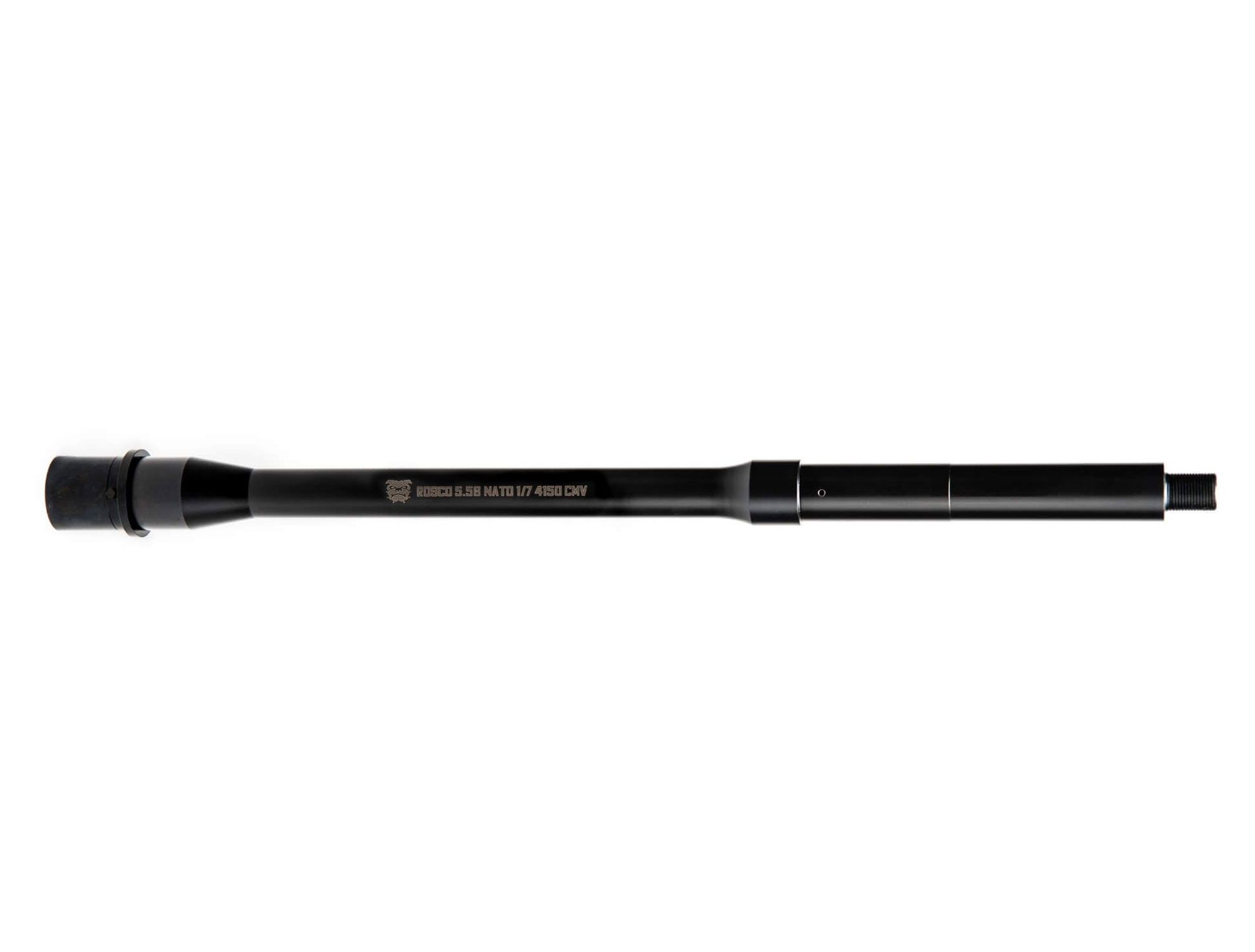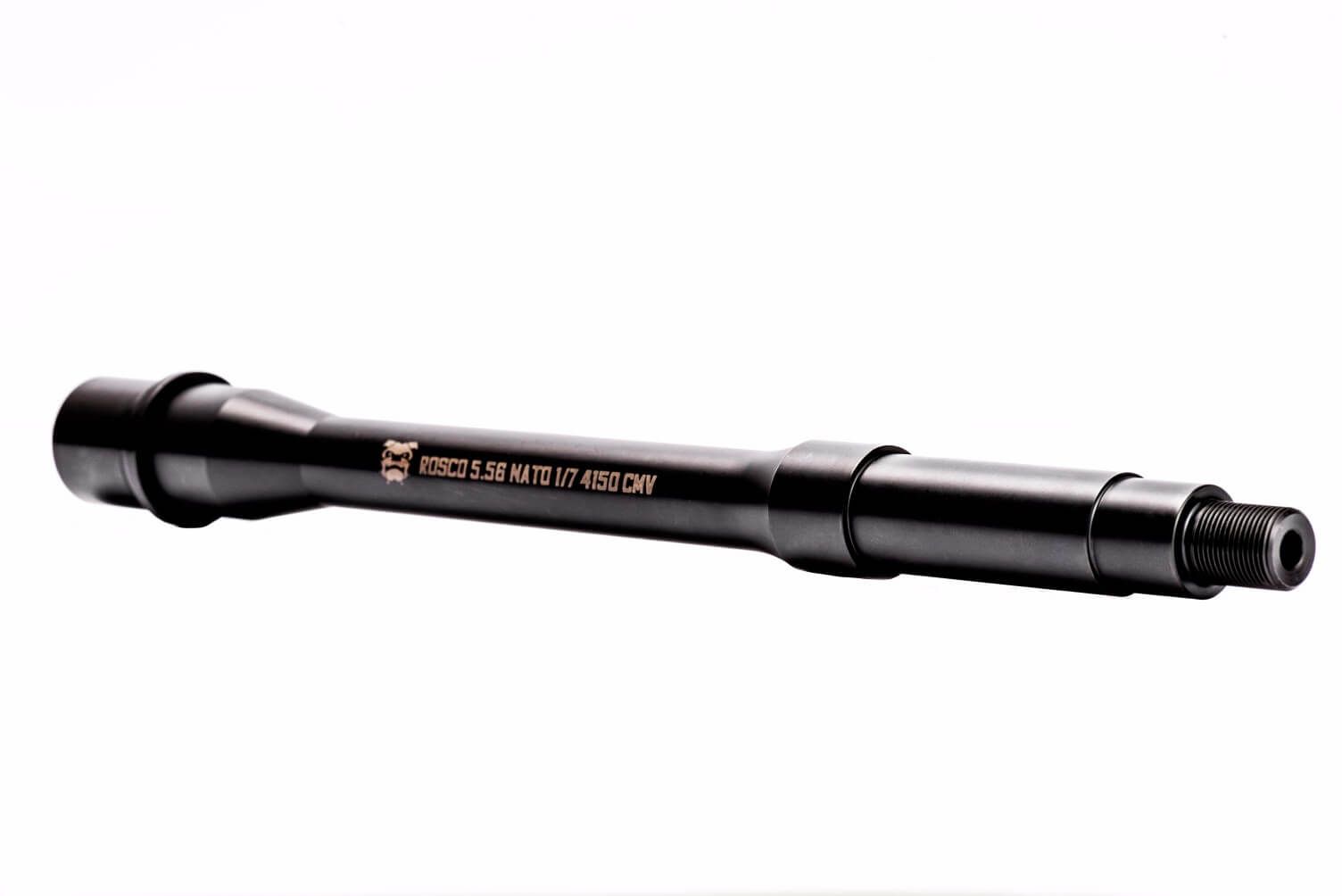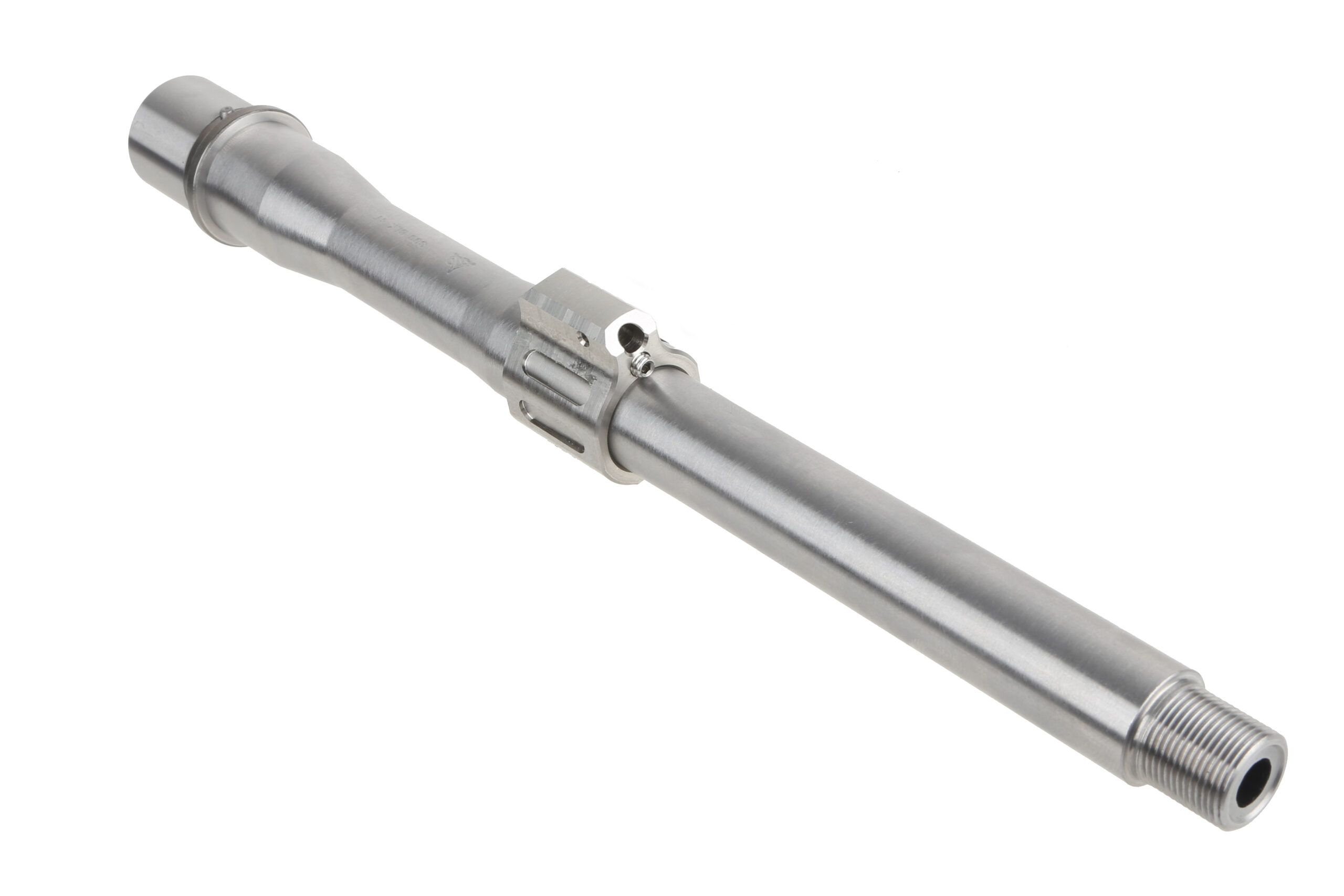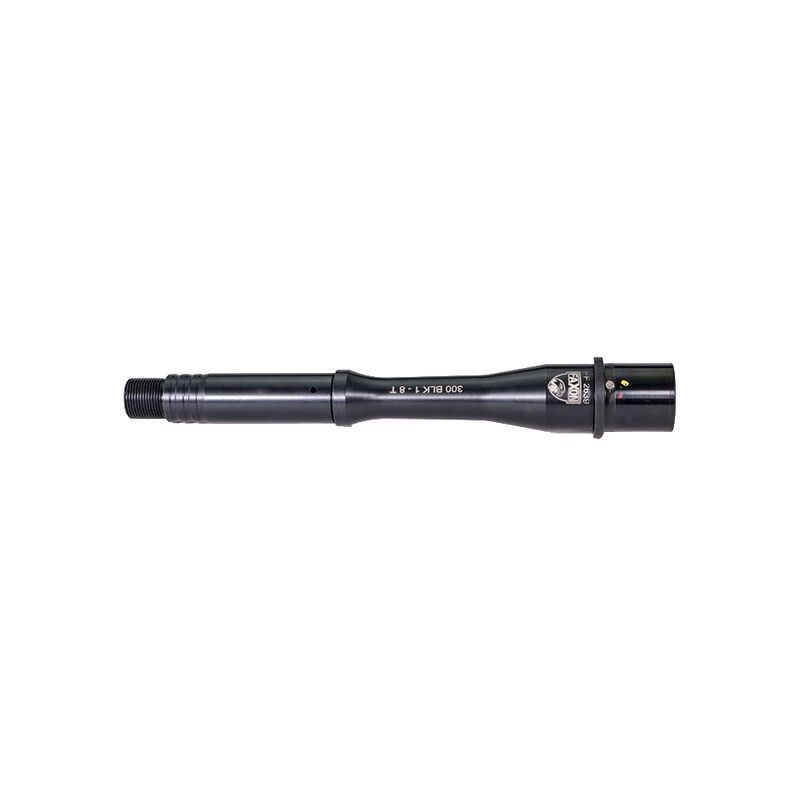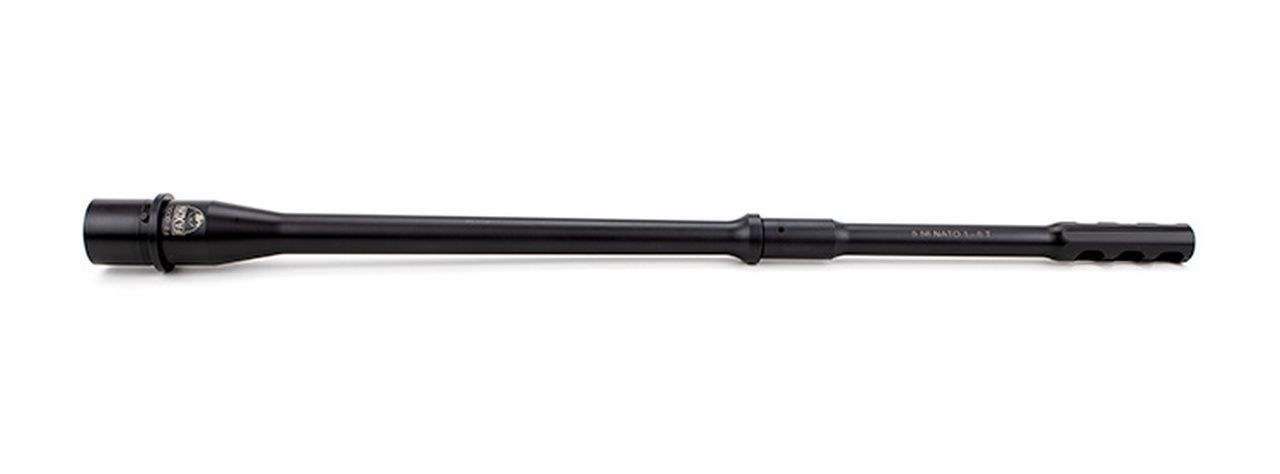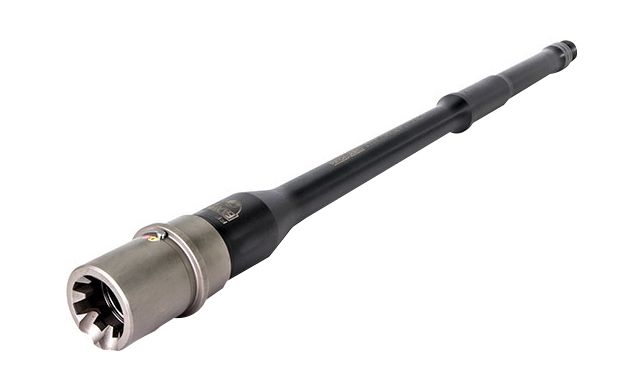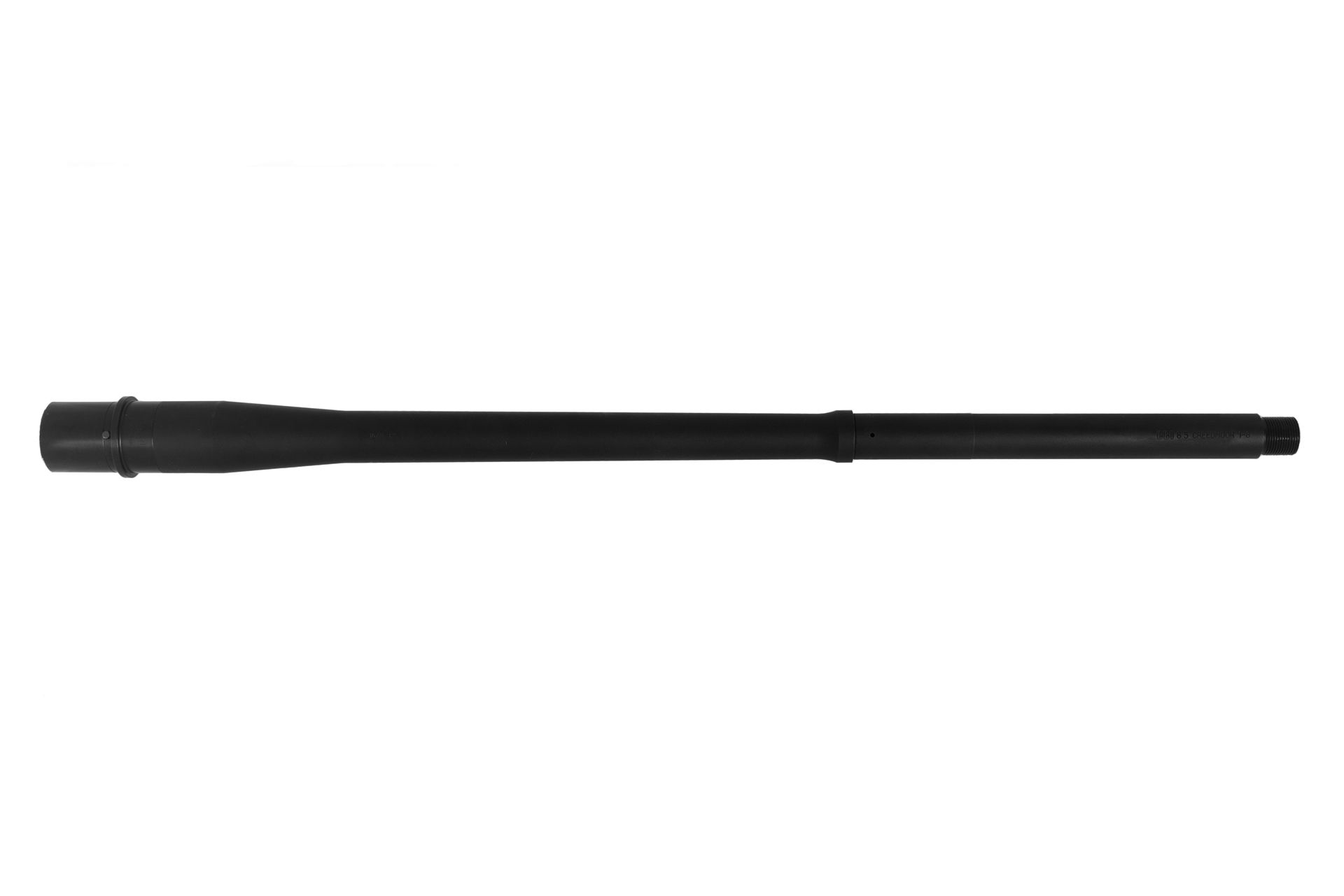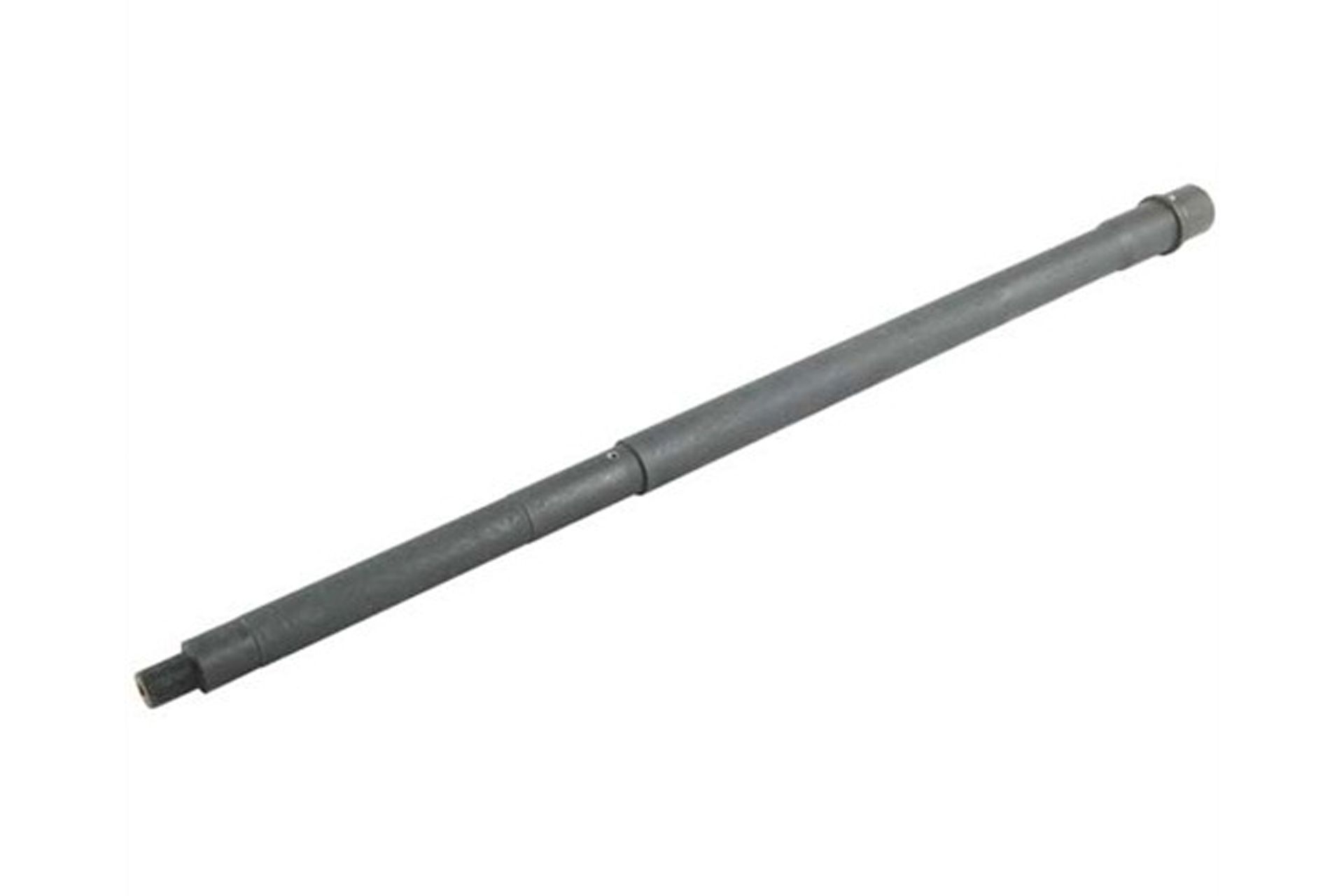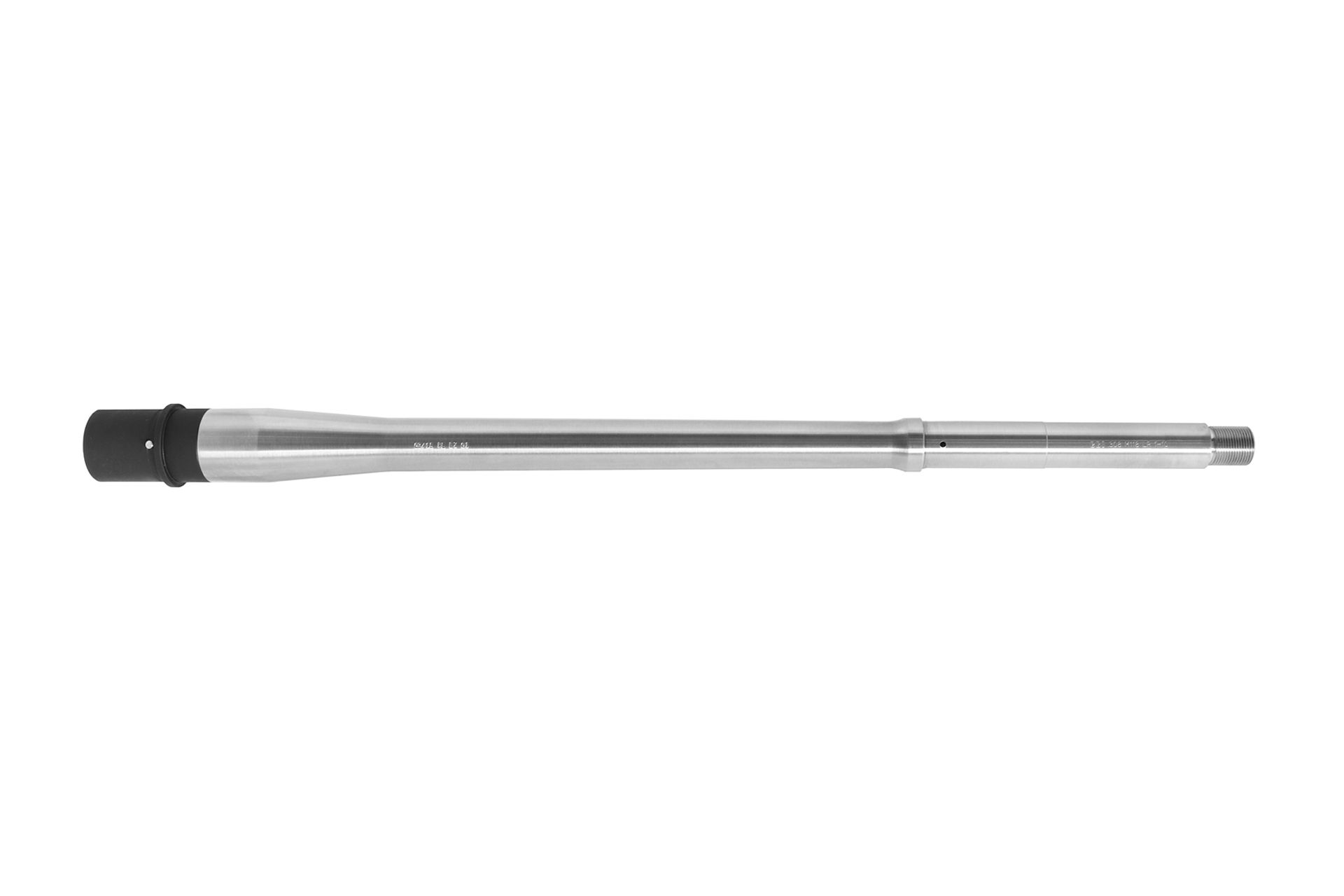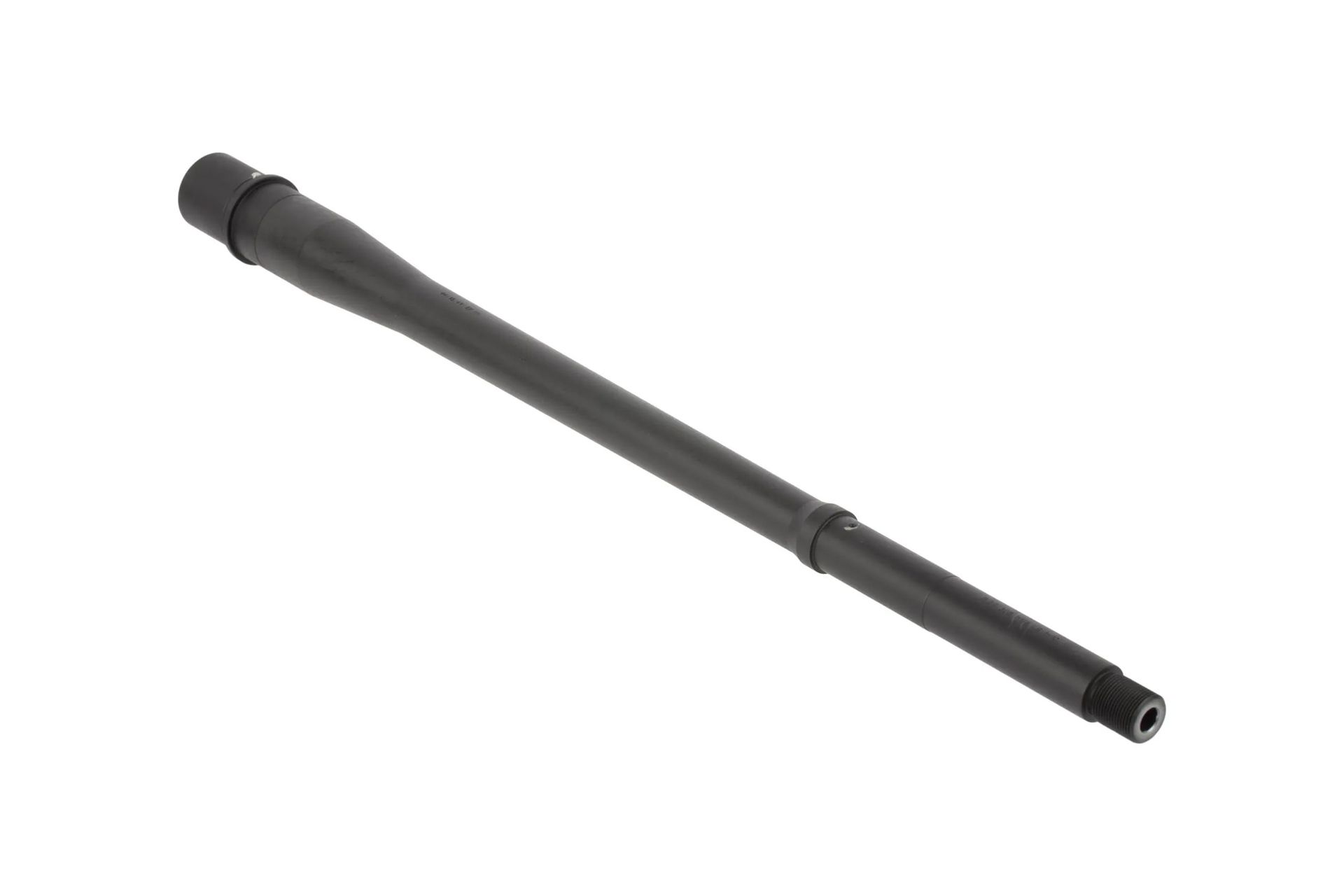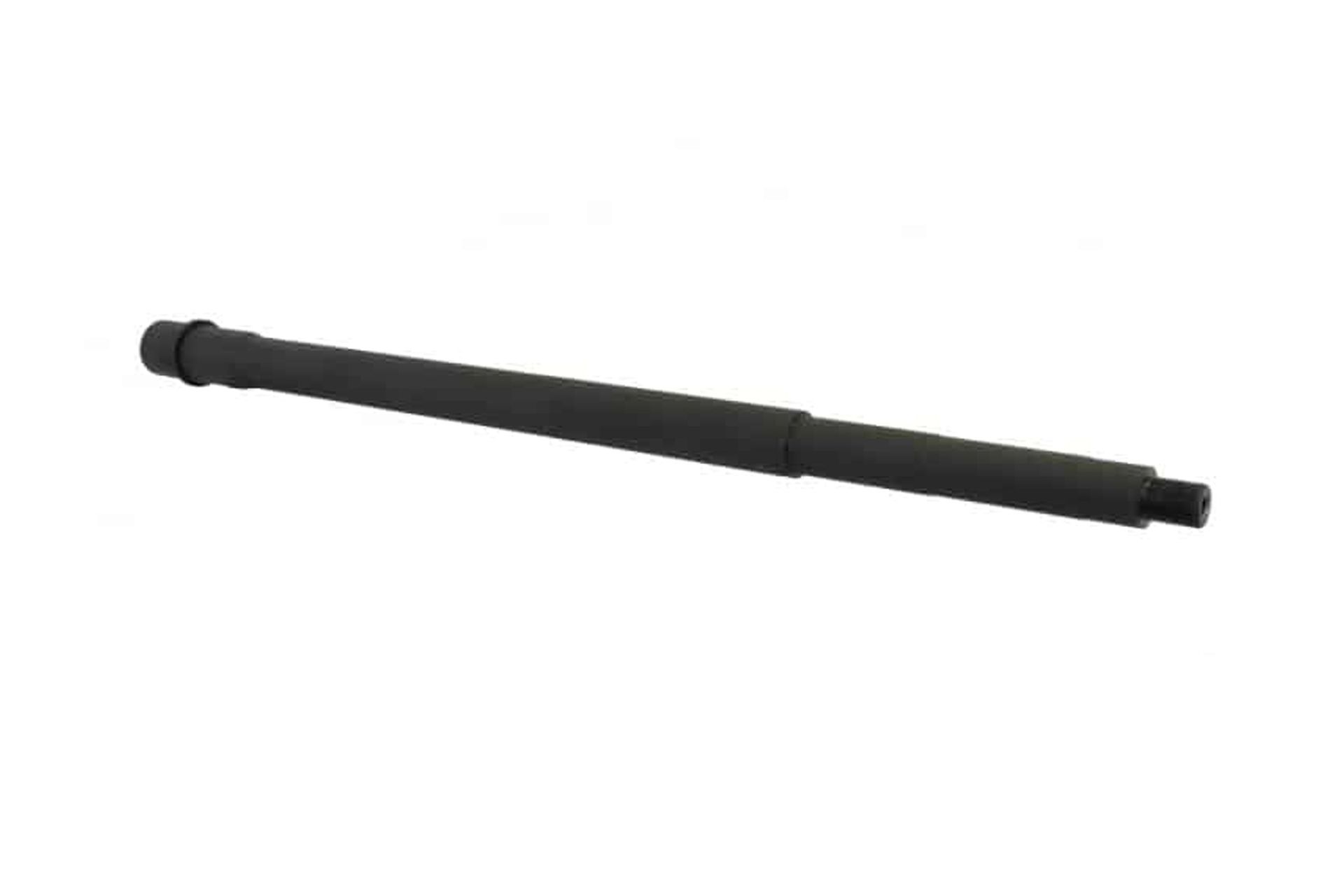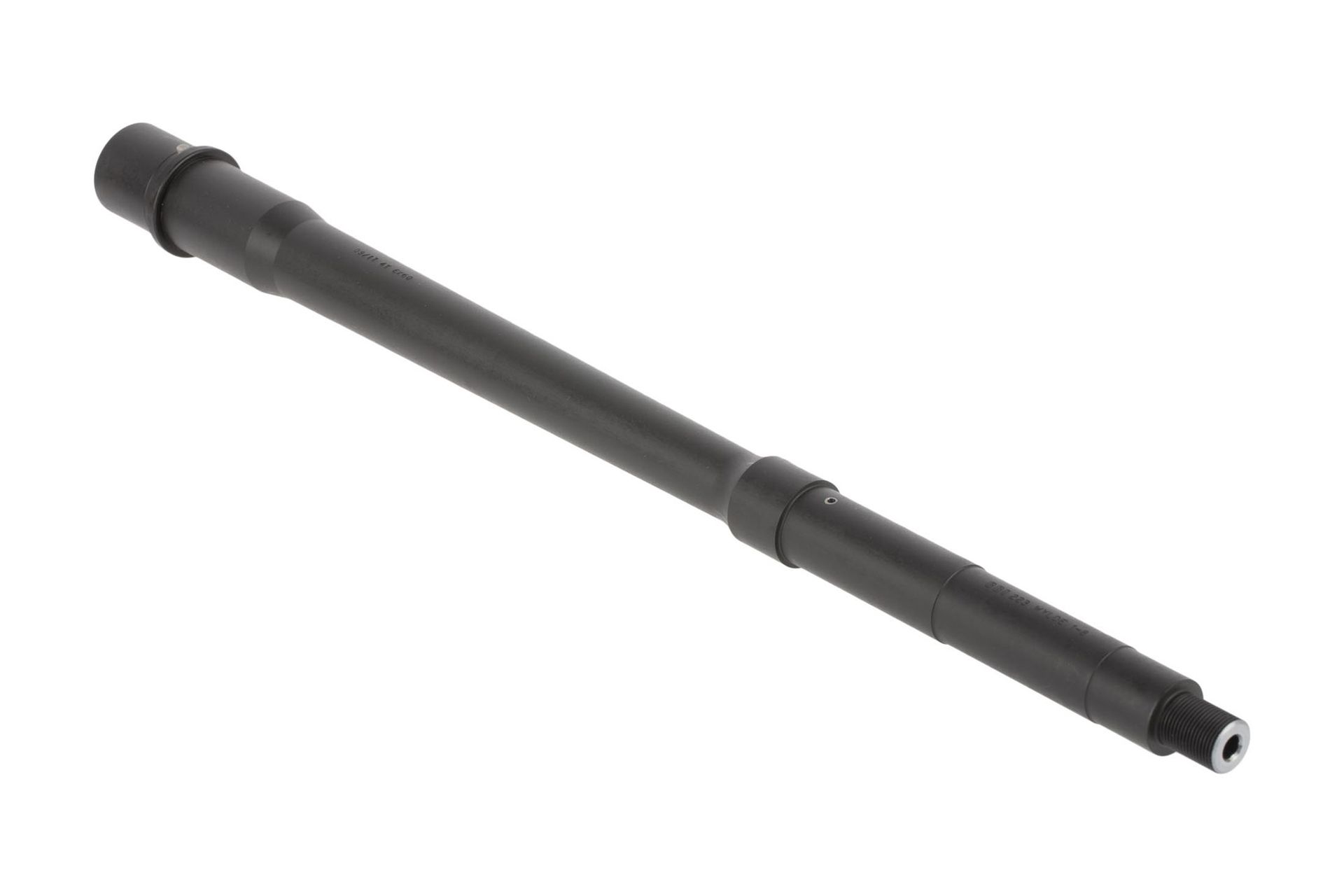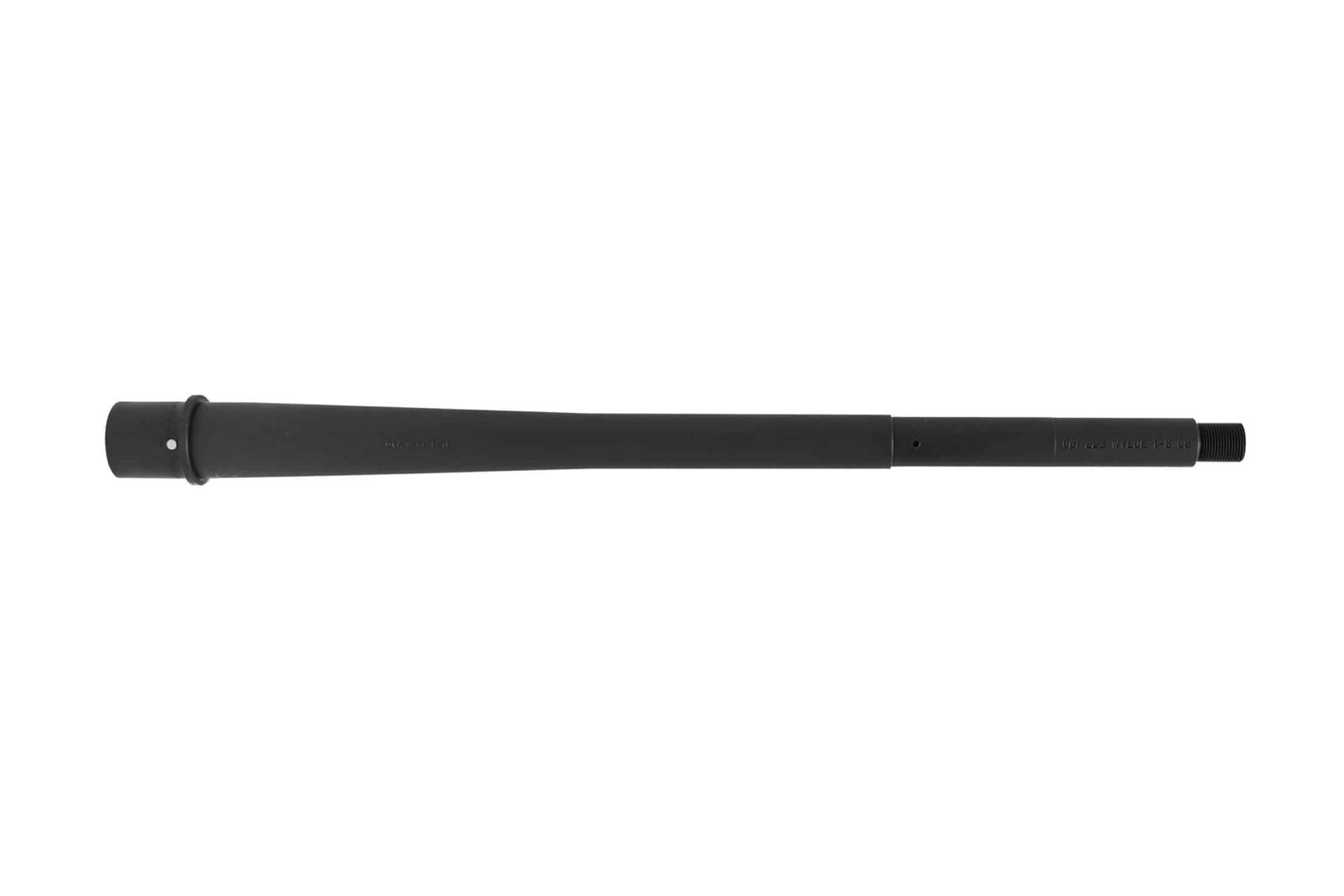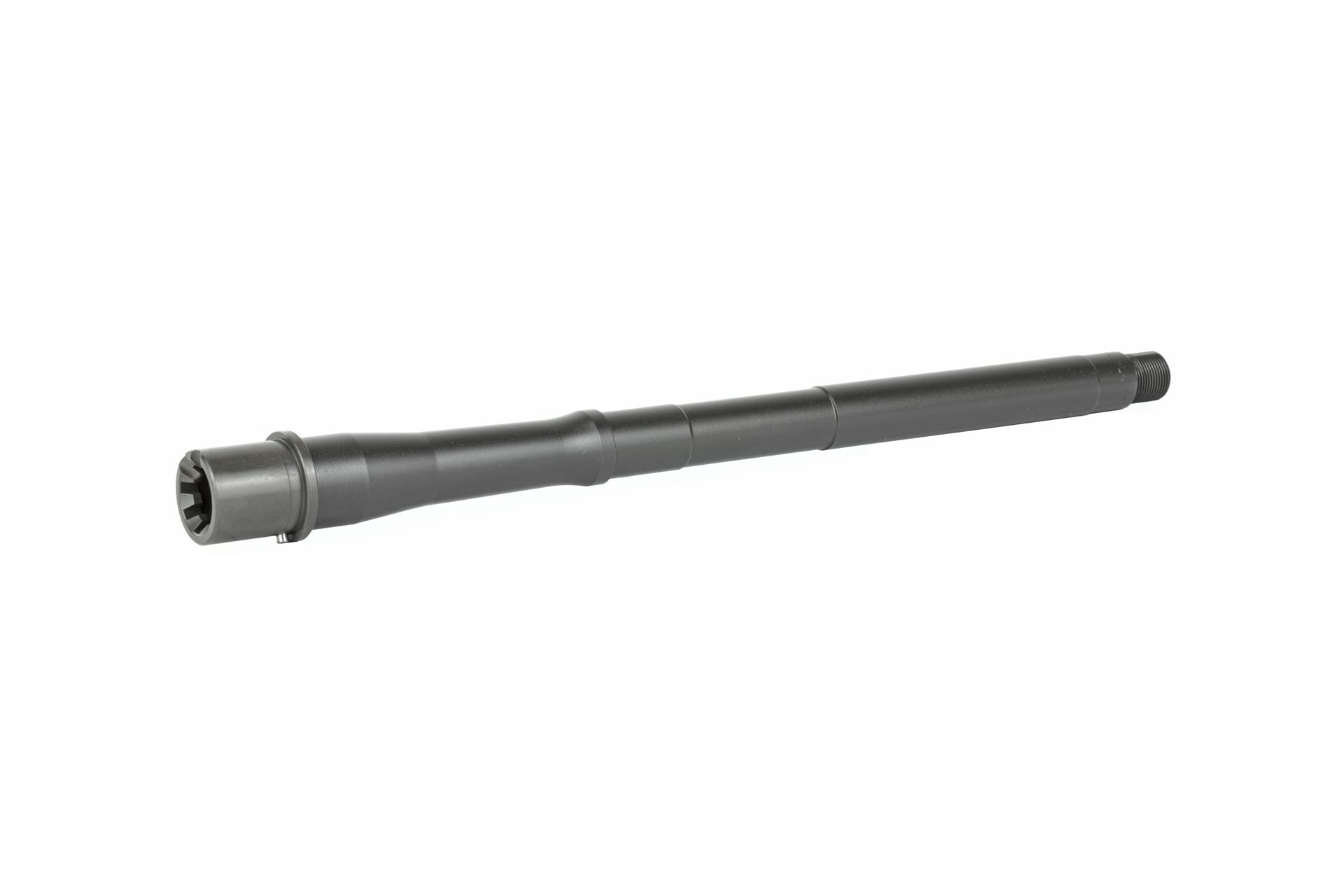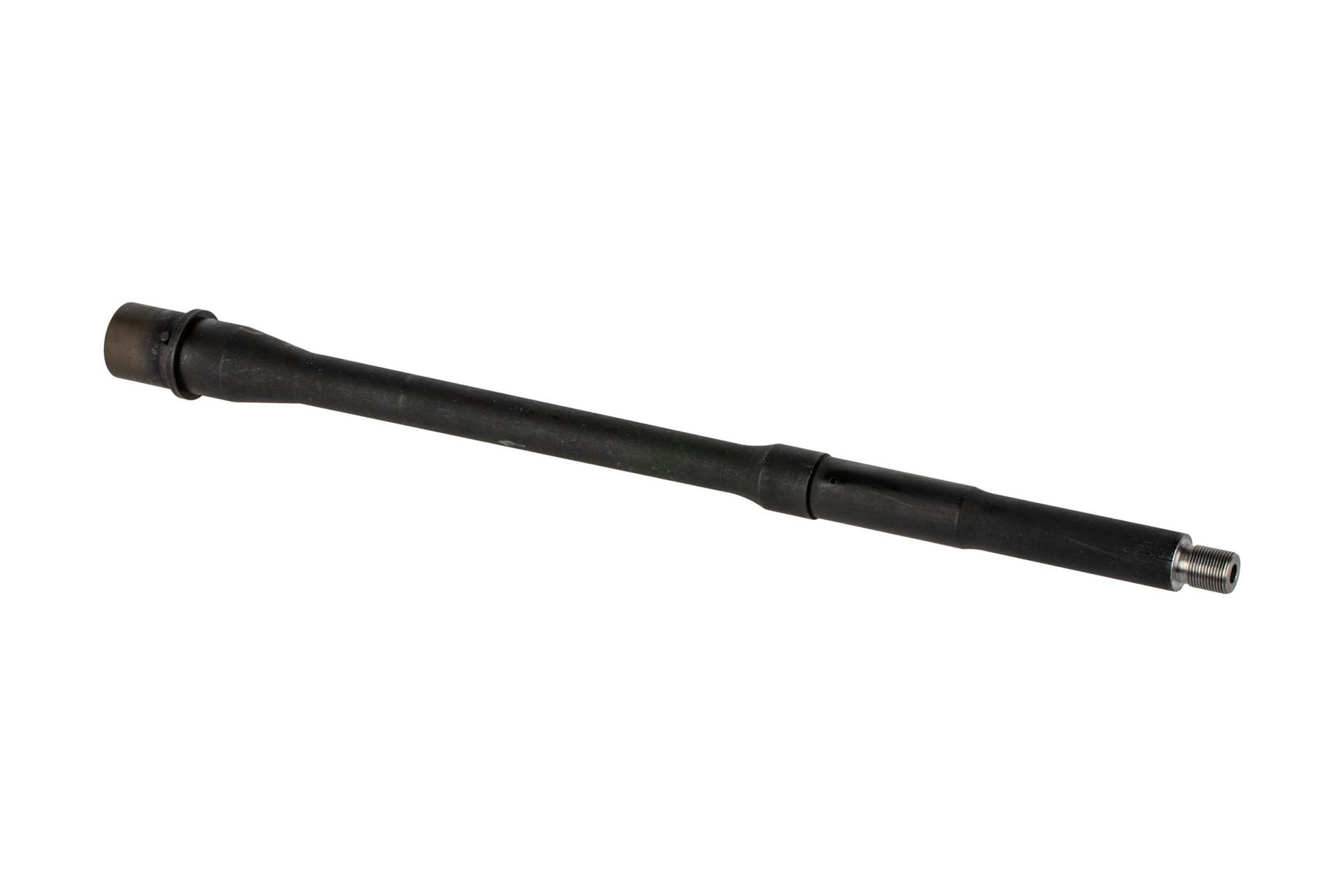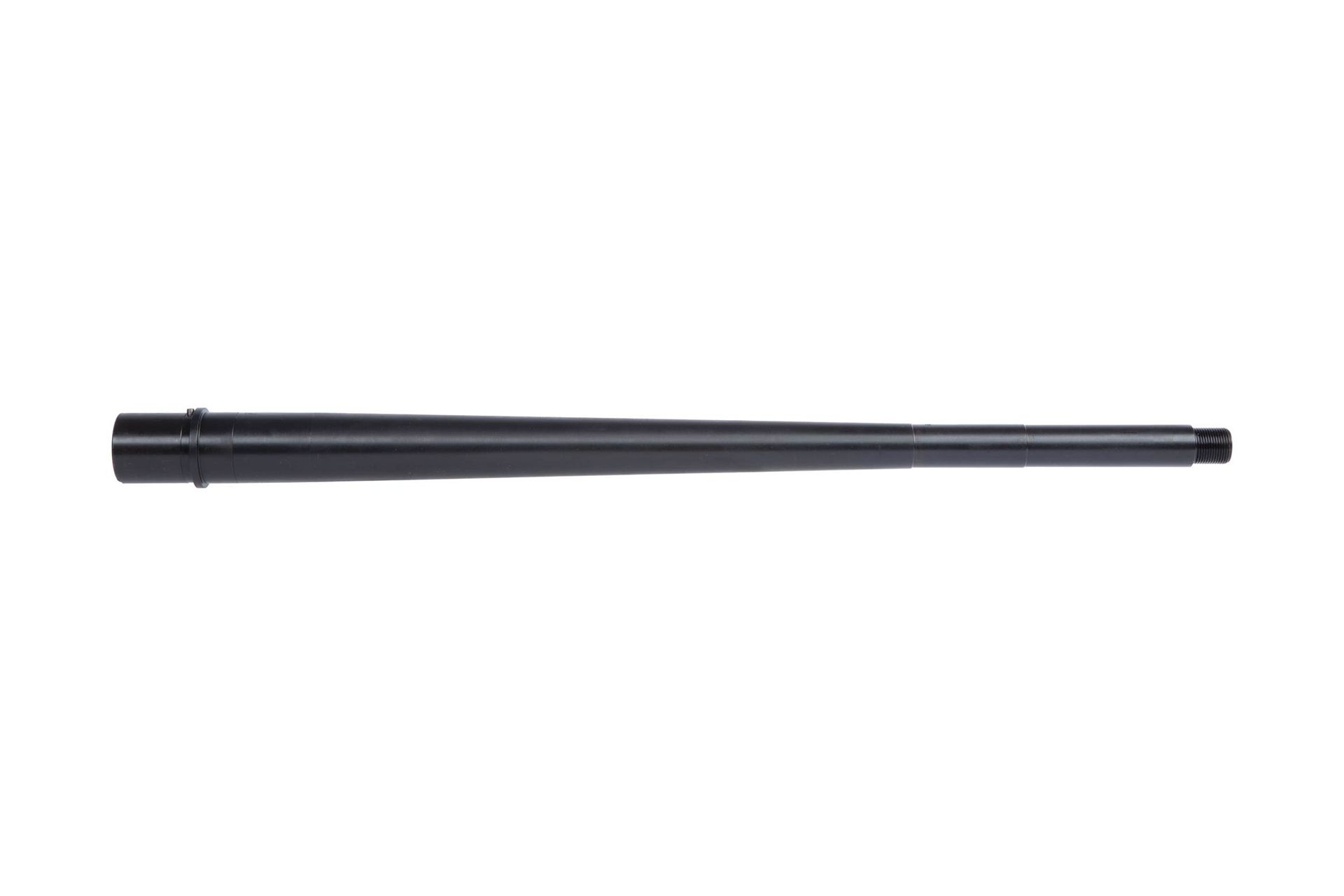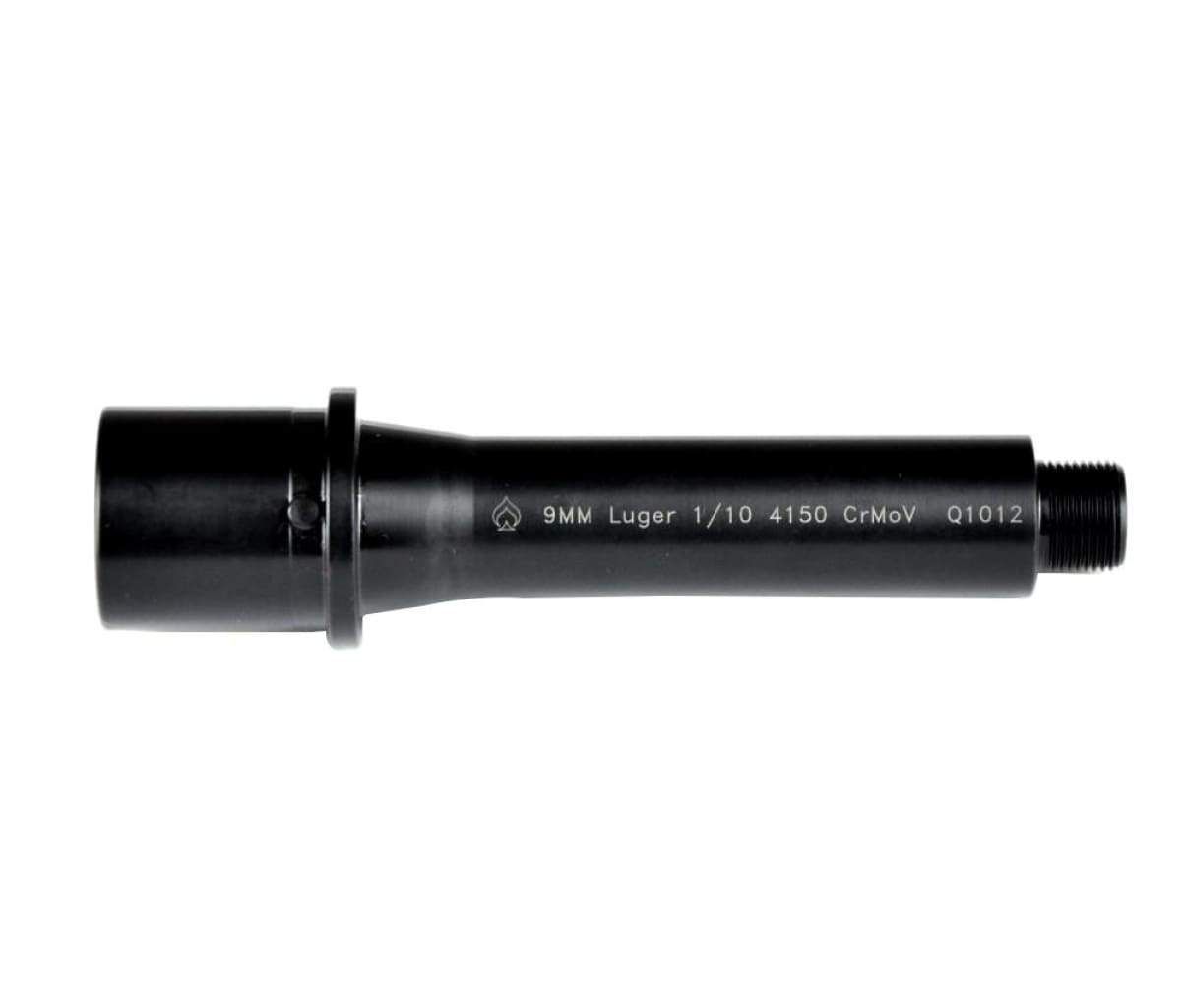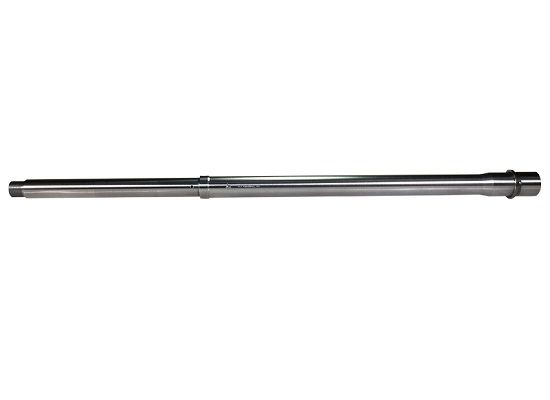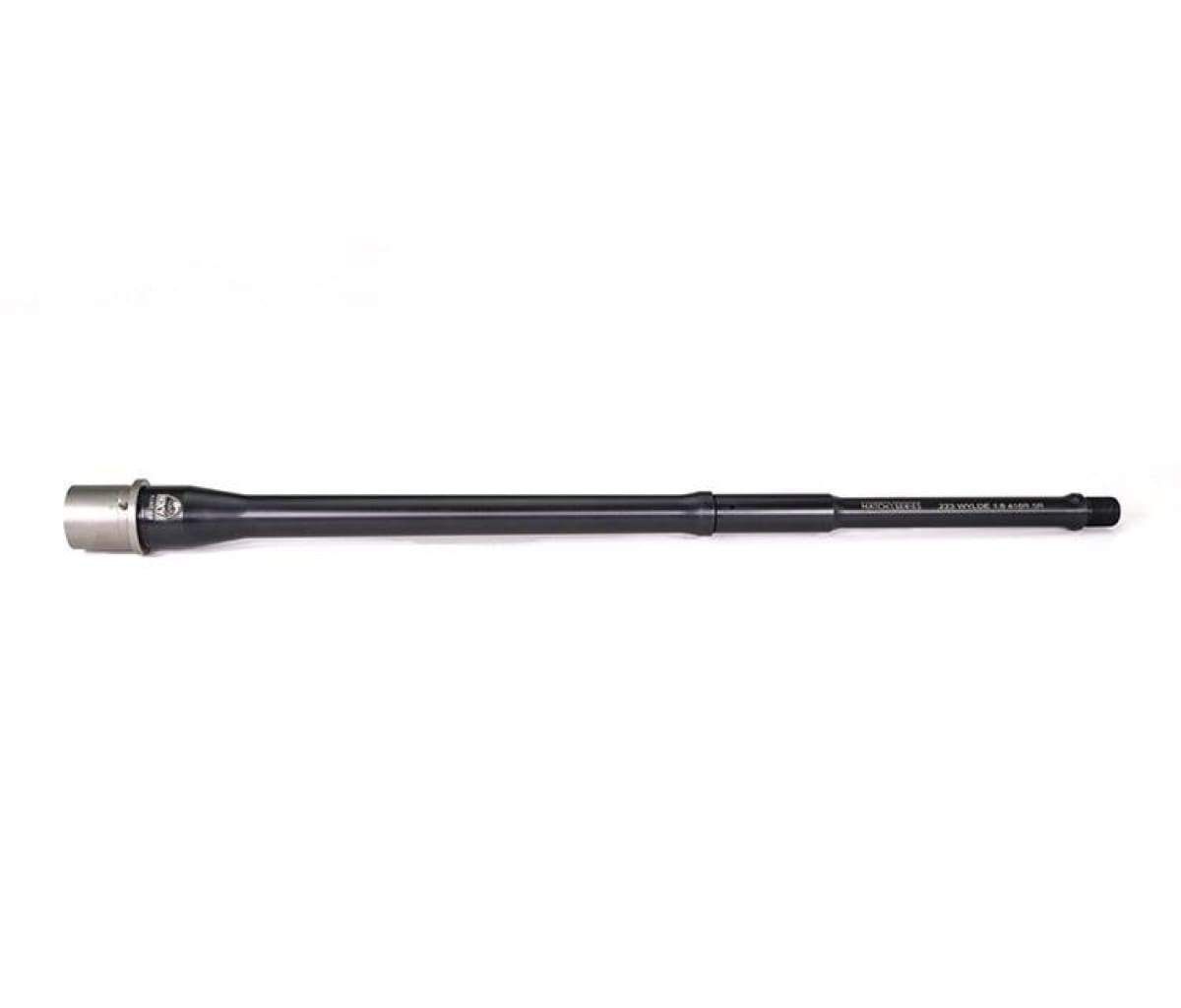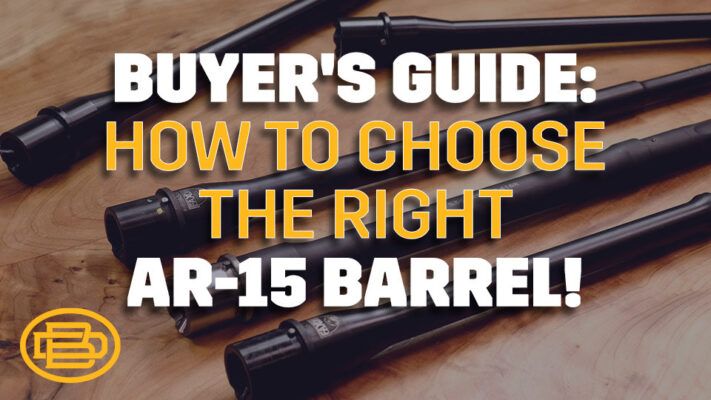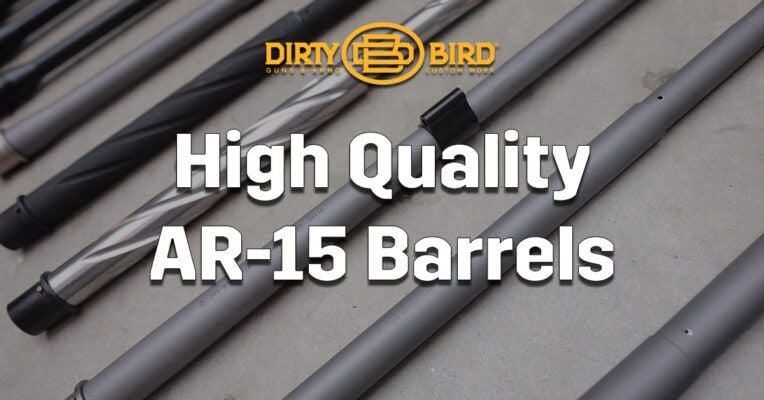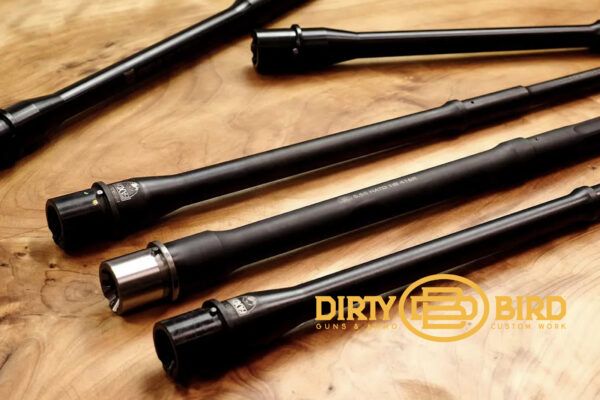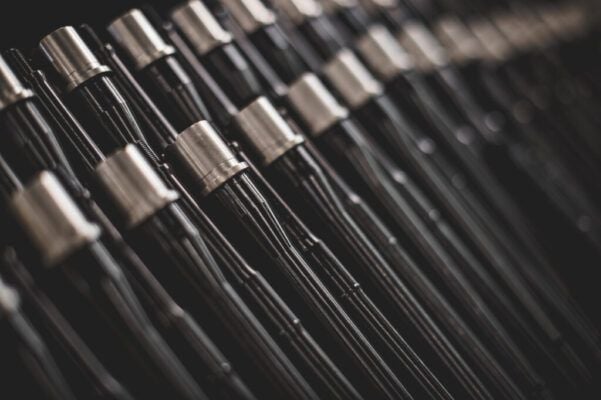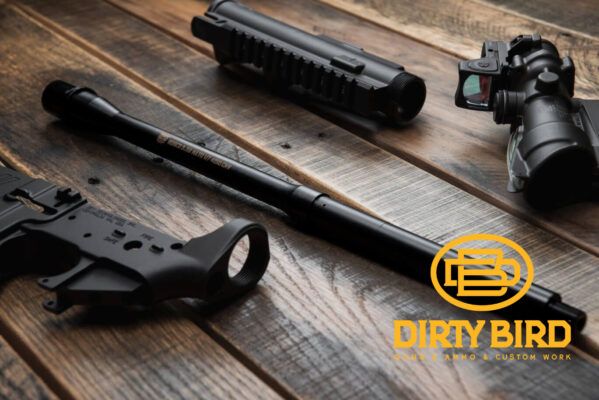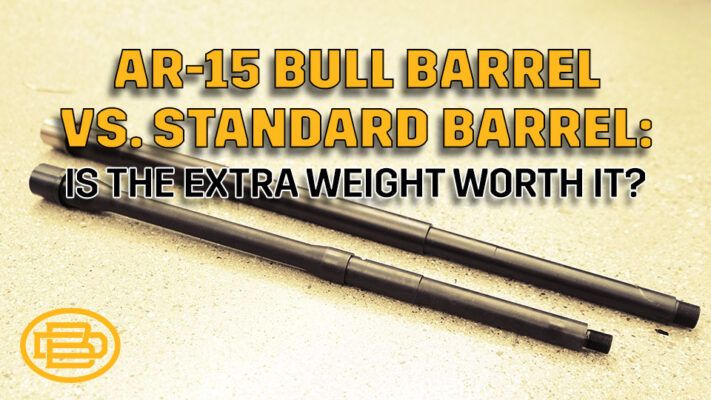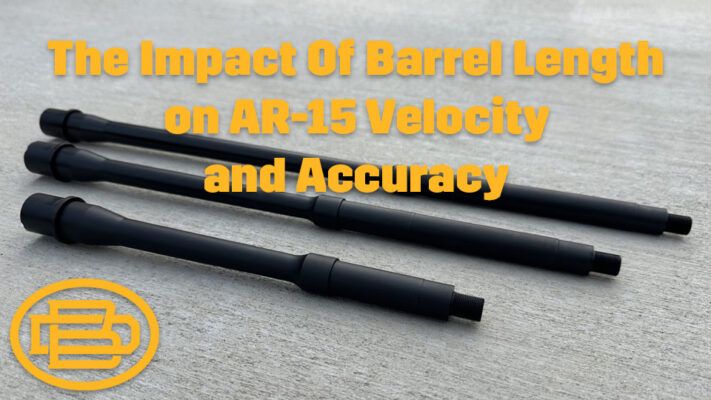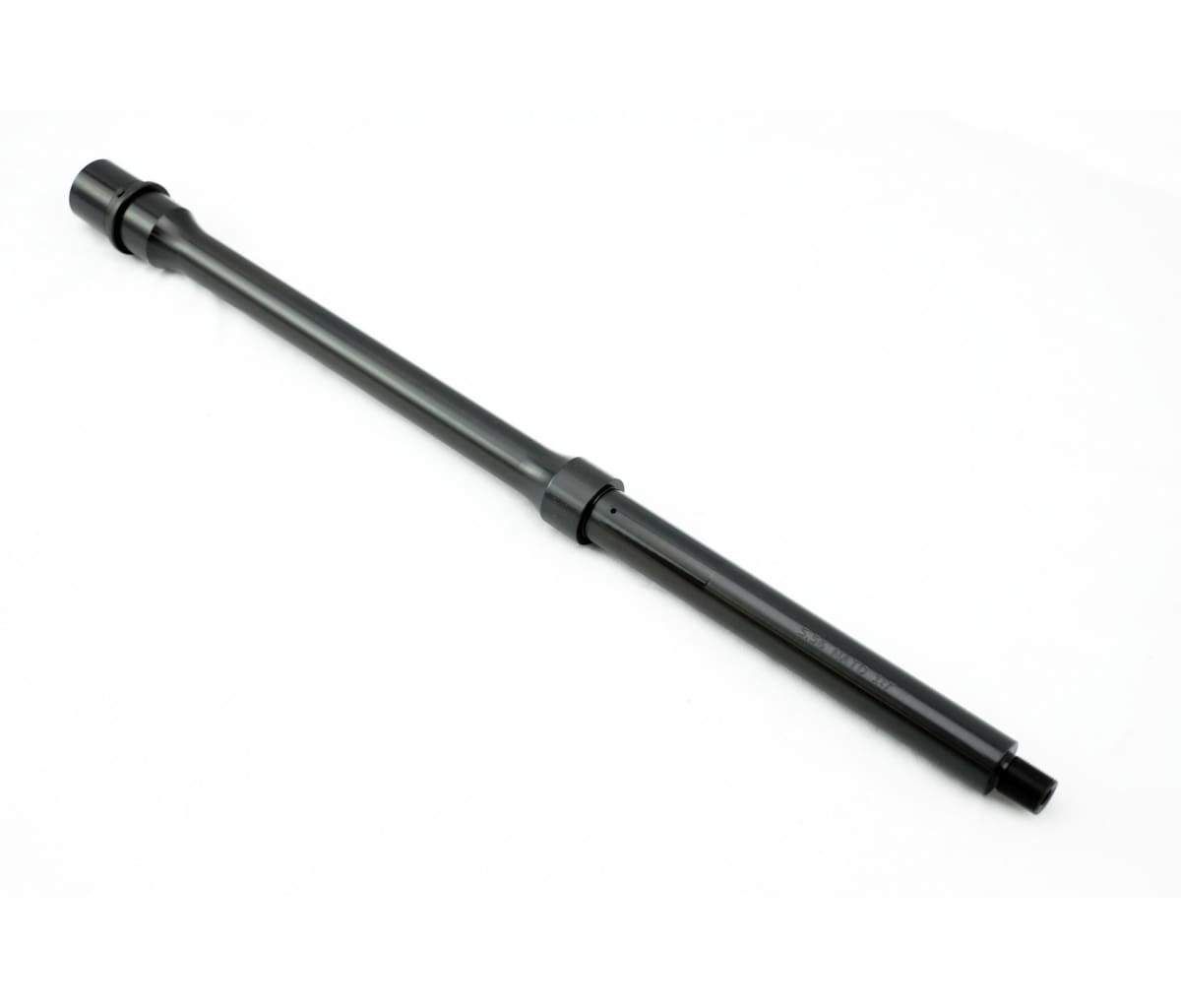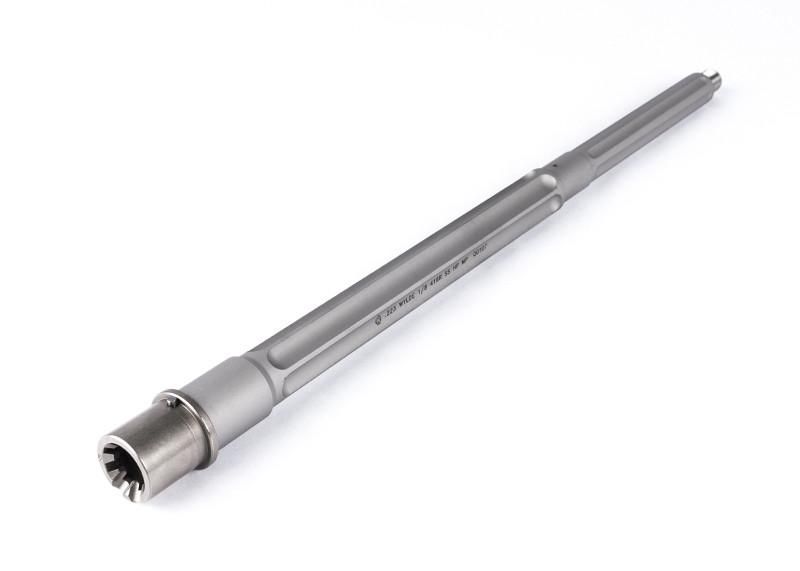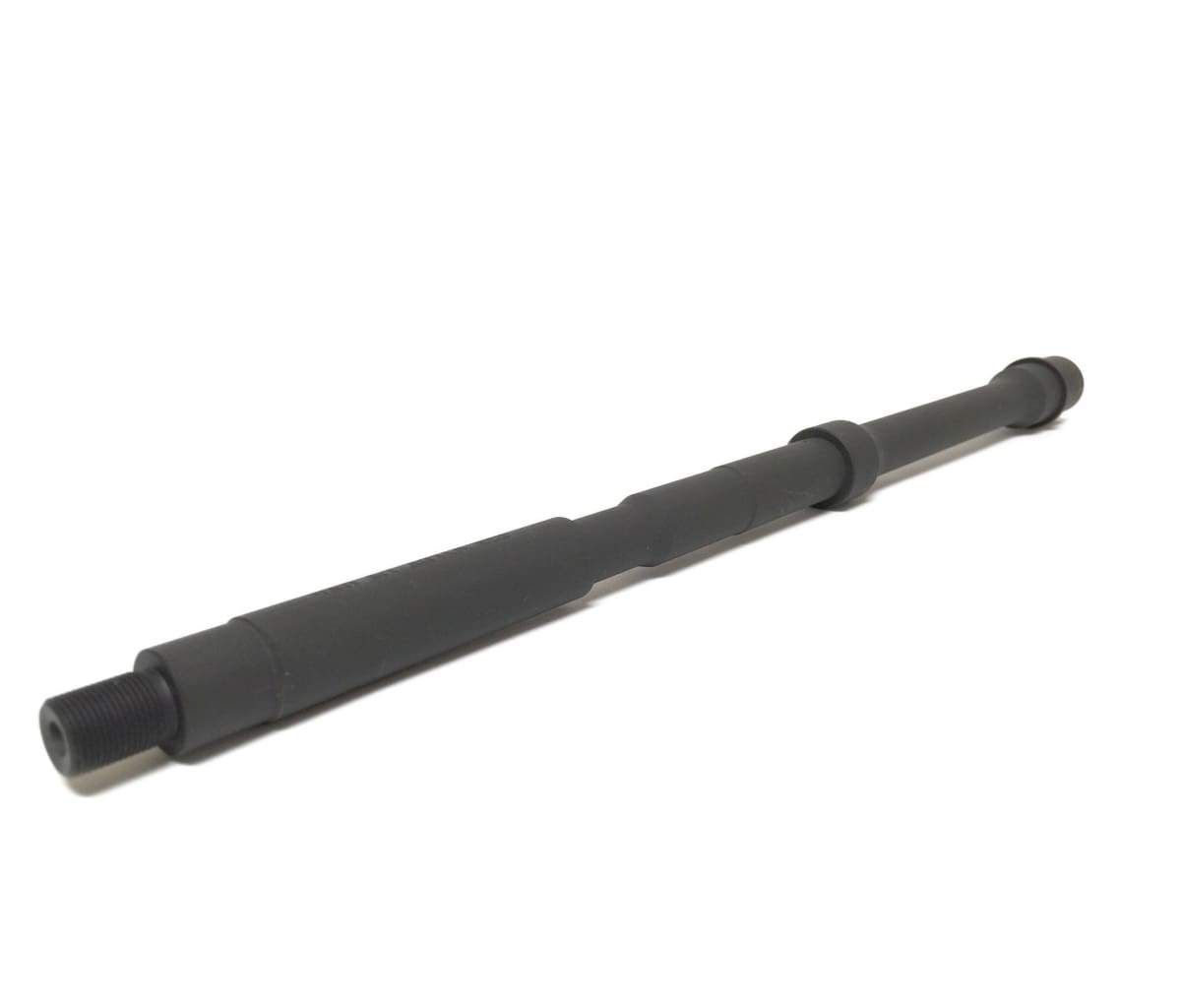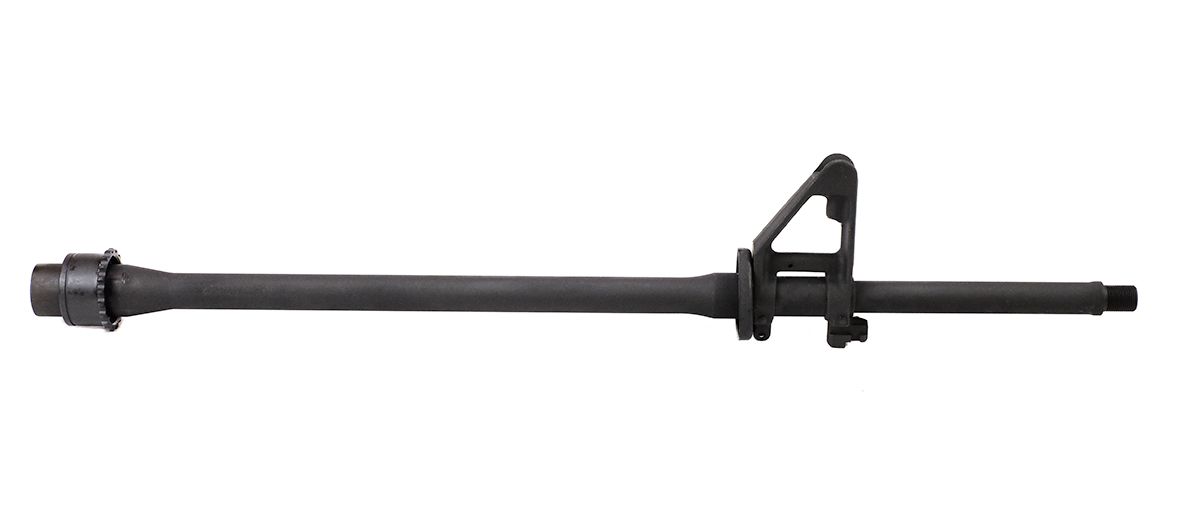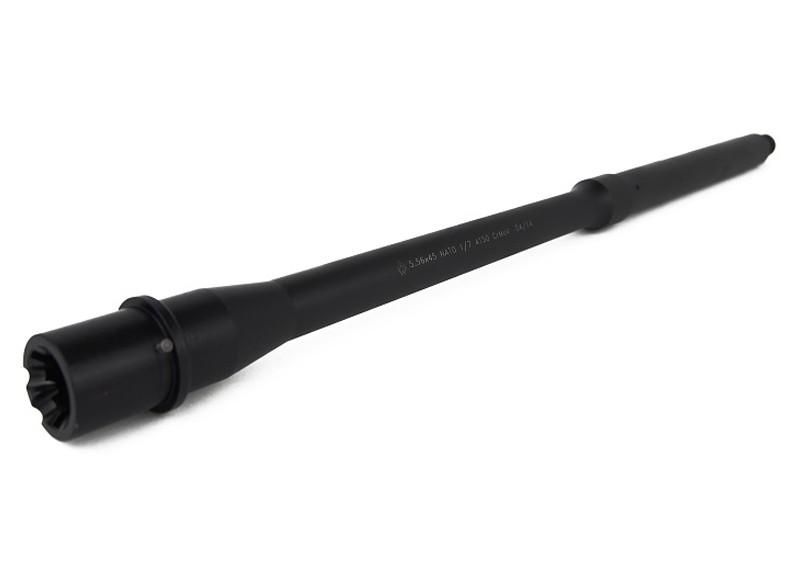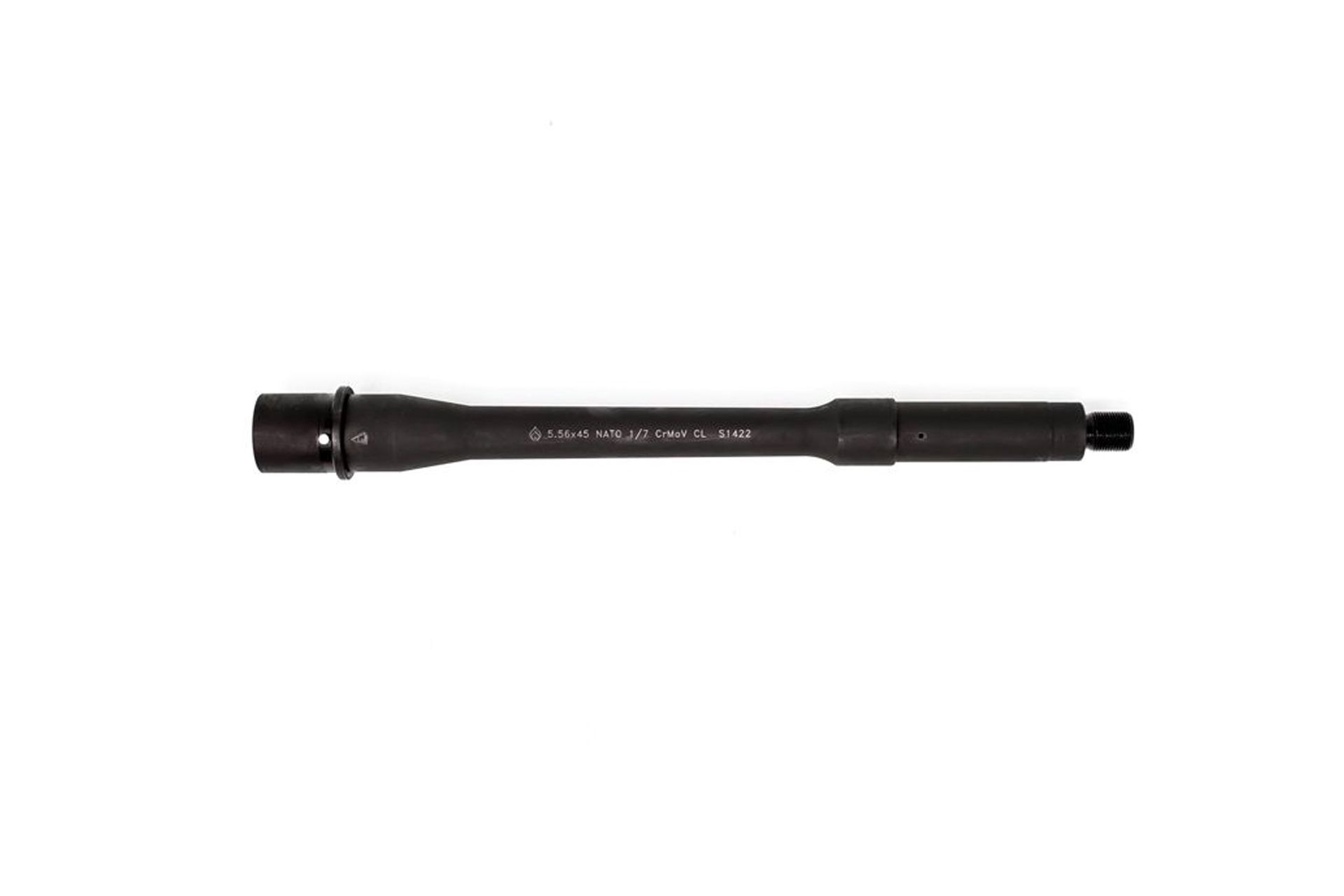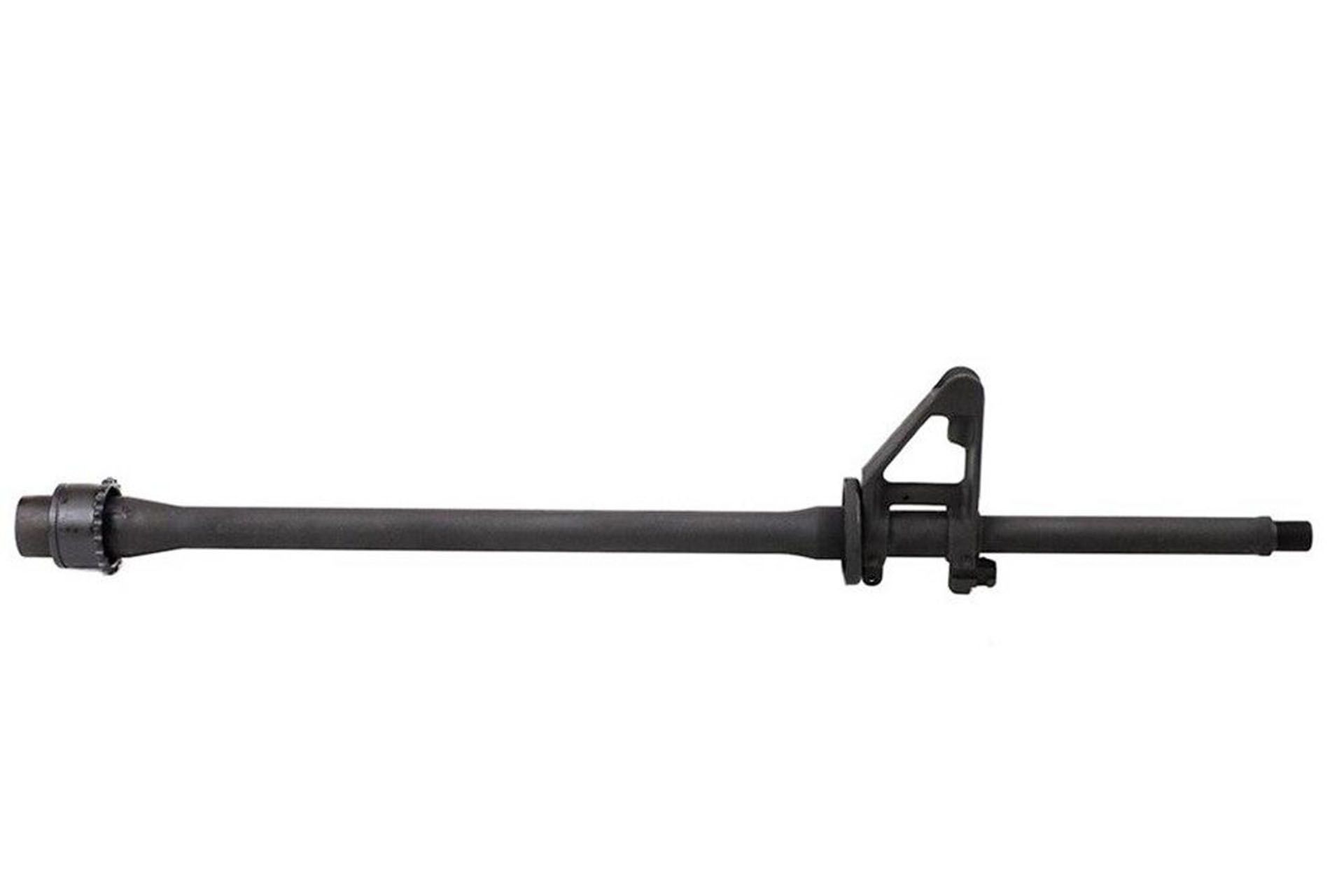Browse our superior selection of AR-15 Barrels—expertly crafted to enhance precision, durability, and overall firearm performance.
Need a recommendation? Dive into our expert blogs for insights.
Types of AR-15 Barrels
Choosing the right AR-15 barrel is critical for optimizing your rifle’s performance, durability, and handling. Barrel materials, lengths, and profiles each play a pivotal role in tailoring your AR-15 to specific applications. Here’s a detailed look at the key considerations for selecting the ideal barrel.
Barrel Materials
-
- 4150 Chrome-Moly Vanadium Steel
The most common material for AR-15 barrels, 4150 steel, is known for its durability, heat resistance, and ability to withstand prolonged use. It is an excellent choice for general-purpose shooting, tactical applications, and rifles with heavy firing schedules. This steel is often paired with chrome lining for added longevity and corrosion resistance.
- 4150 Chrome-Moly Vanadium Steel
-
- Stainless Steel
Stainless steel barrels are ideal for precision shooting and long-range accuracy. They provide exceptional rifling consistency, ensuring tight groupings. These barrels are favored by competition shooters and sharpshooters who prioritize precision over extended barrel life.
- Stainless Steel
-
- Lightweight Materials
Lightweight barrels are popular for shooters who value maneuverability and fatigue reduction. While slightly less durable than heavier options, they are excellent for AR pistols or rifles designed for dynamic use.
- Lightweight Materials
Barrel Lengths
Barrel length has a significant impact on your rifle’s performance, particularly in accuracy, velocity, and maneuverability:
-
- 16-Inch Barrels: The standard for AR-15 rifles, offering a versatile balance between portability and effective range.
-
- 20-Inch Barrels: Perfect for long-range precision shooting and hunting, these barrels maximize velocity and accuracy at extended distances.
-
- Shorter Barrels (10.5-14.5 inches): Designed for AR pistols and CQB applications, shorter barrels offer excellent maneuverability and reduced weight, though at the cost of some velocity and effective range.
Barrel Profiles
The profile of an AR-15 barrel determines its weight, heat management, and shooting stability:
-
- Lightweight Profiles: Lightweight profiles are ideal for tactical use and high-mobility scenarios and are great for fast handling and reduced fatigue.
-
- Medium Profiles: Strike a balance between heat resistance and portability, making them versatile for various shooting disciplines.
-
- Heavy Profiles Provide superior heat dissipation and minimal barrel whip, ensuring stable and accurate shots during prolonged or high-volume firing sessions. They are often used in competition or long-range builds.
Key Features
-
- Threading Options: Many barrels are threaded to accommodate muzzle devices such as compensators, flash hiders, or suppressors, expanding your customization options.
-
- Barrel Extensions: Essential for ensuring compatibility with AR-15 upper receivers, barrel extensions improve cycling reliability and lock-up.
-
- Torque Considerations: Proper installation is critical for accuracy and reliability. Using tools like a barrel nut wrench for AR-15s ensures the barrel nut is torqued to specifications for secure alignment.
Major Brands of AR-15 Barrels
When it comes to AR-15 barrels, choosing a trusted brand is essential for ensuring quality, performance, and durability. At Dirty Bird Guns & Ammo, we carry top-tier brands that deliver precision engineering and reliable results for all shooting styles. Here’s a closer look at the leading names in AR-15 barrels and what sets them apart:
Faxon Firearms is renowned for its lightweight, precision-engineered barrels. Their innovative designs cater to shooters seeking high accuracy without compromising maneuverability. Faxon’s barrels are ideal for competition and tactical use, offering seamless compatibility with AR-15 barrel extensions and other essential components.
Ballistic Advantage is a standout choice for shooters who want high-performance barrels at an affordable price. Known for their rigorous quality standards, these barrels provide excellent durability and accuracy, making them suitable for recreational and professional applications. Their broad product line ensures compatibility with accessories like muzzle devices and barrel nut wrenches for AR-15s.
- Aero Precision
Aero Precision offers reliable barrels designed to meet the needs of all shooting styles. Aero Precision barrels deliver versatility and performance from lightweight configurations to robust long-range options. They are compatible with most AR-15 barrel extensions, ensuring smooth installation and operation across builds.
Our Dirty Bird Industries barrels are tailored to AR-15 enthusiasts who want customizable options. Designed with precision and reliability, Dirty Bird barrels offer a balance of quality and value, with configurations catering to tactical, recreational, and competition shooters.
These trusted brands can help you find the perfect barrel for your AR-15 build. Whether you need lightweight agility, long-range accuracy, or a customizable option, Dirty Bird Guns & Ammo offers barrels fully compatible with essential accessories to complete your setup.
Check our Featured Collection of AR-15 Barrels!
Frequently Asked Questions About AR-15 Barrels
- What is the ideal AR-15 barrel length?
The best barrel length depends on your intended use:- 16-inch barrels: Ideal for all-around performance, balancing portability and effective range.
- 20-inch barrels: Best for long-range precision, providing more incredible velocity and accuracy.
- Shorter barrels (10.5-14.5 inches): Perfect for AR pistols and close-quarters scenarios, offering increased maneuverability.
- How do you properly torque an AR-15 barrel nut?
Proper torquing ensures secure barrel installation and optimal accuracy. Use a barrel nut wrench for AR-15s and follow these steps:- Align the barrel extension with the upper receiver.
- Tighten the barrel nut to 30-80 ft-lbs of torque, depending on manufacturer specifications.
- Ensure proper alignment for the gas system to function smoothly.
- What are the advantages of specific AR-15 barrel profiles?
Barrel profiles impact weight, heat management, and stability:- Lightweight profiles: Great for agility and reducing fatigue in dynamic shooting.
- Medium profiles: Balanced for versatility in most applications.
- Heavy profiles: Offer superior heat resistance and stability for prolonged or precision shooting.
- What is the significance of barrel twist rate in AR-15 rifles?
The twist rate of a barrel refers to the distance a bullet travels down the barrel to complete one full rotation, typically expressed as a ratio (e.g., 1:7, 1:8, 1:9). This rate is crucial for stabilizing bullets of various lengths and weights:- 1:7 Twist Rate: Ideal for heavier bullets (62 grains and above), providing the necessary spin for stability.
- 1:8 Twist Rate: A versatile option that effectively stabilizes a wide range of bullet weights, from 55 to 77 grains.
- 1:9 Twist Rate: Best suited for lighter bullets (40 to 55 grains), offering adequate stabilization for these projectiles.
- How does barrel material affect the performance and durability of an AR-15
The material of an AR-15 barrel significantly influences its weight, heat resistance, accuracy, and longevity:- 4150 Chrome-Moly Vanadium Steel: Known for its durability and heat resistance, it is suitable for sustained firing schedules.
- Stainless Steel: Offers superior accuracy due to precise rifling but may have a shorter lifespan under rapid-fire conditions.
- Carbon Fiber: Provides a lightweight alternative with excellent heat dissipation, though often at a higher cost.
- What are the legal considerations regarding AR-15 barrel lengths?
In the United States, federal law mandates that rifles have a minimum barrel length of 16 inches. Barrels shorter than this classify the firearm as a Short-Barreled Rifle (SBR), which requires a specific tax stamp and registration under the National Firearms Act (NFA). Alternatively, AR-15s with barrels shorter than 16 inches can be configured as pistols, provided they do not have specific stock attachments. Please review local and federal regulations to ensure you comply when selecting your barrel length.
